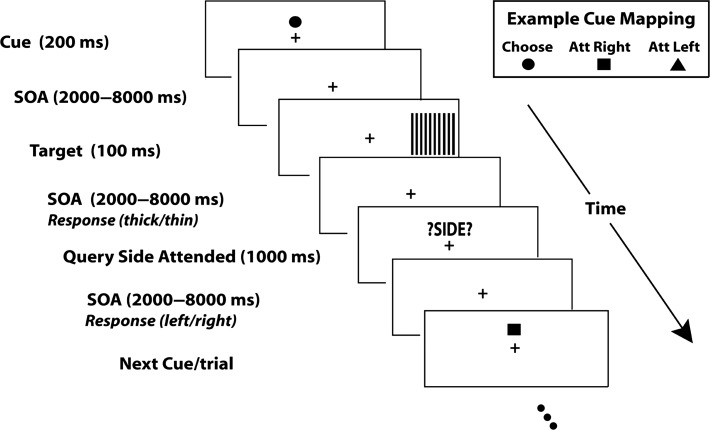Figure 1.
Schematic of the trial-by-trial cuing paradigm. Each trial started with a visual symbolic cue (200 ms) that either directed the subject to covertly attend to the left or the right hemifield, or to spontaneously choose which hemifield to covertly attend for that trial (an example cue mapping is shown at lower right; the mapping was counterbalanced across subjects). Following a variable stimulus onset asynchrony (SOA) from cue to target of 2000–8000 ms, a high-contrast grating target was flashed in either the left or right hemifield. Participants were asked to report the spatial frequency of the grating appearing in the attended hemifield, and to ignore the grating in the unattended hemifield (they responded with a button to indicate whether the grating lines appeared to be “thick” or “thin”). Following the target with an SOA of 2000–8000 ms, a visual prompt (“?SIDE?”) was displayed, which prompted the subjects to report the attended spatial location (left or right) for that trial; this was required for all trials, regardless of whether the trial was an instructed or choice cue trials. The next trial began a random 2000–8000 ms after the onset of the “side” prompt.

